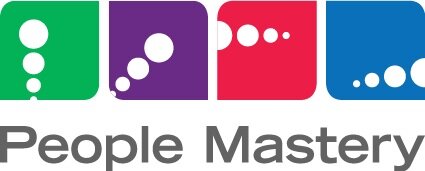How to nail feedback for your high performers (part 3 of the trilogy)
If you haven’t read Part 1 or 2 of this series yet, you can find Part 1 (on nailing positive feedback) here and Part 2 (on nailing feedback for improvement) here. Then pop back and this one will make a whole lot more sense!
Generally, when we think of giving feedback, it’s not our high-performing team members that come to mind. In fact, as a leader it can be easy to overlook our high performers entirely, apart from the occasional pat on the back. What isn’t obvious is the opportunity we have as leaders to use feedback to take our high performers to the next level.
When you have a team member who is doing well, feedback for improvement can be incredibly powerful (and if you are already giving your high performers this kind of feedback, give yourself 10/10 for being in the Development Zone! Go you!)
The STAAR/AR framework for giving feedback for improvement
Let’s start with a little refresher session on the STAAR/AR model that we showed you in part 2 of this series for giving feedback for improvement, but with a little tweak:
ST Situation or Task The context in which the action or behaviour took place.
A ASK Ask your team member for their perspective on the situation.
A Action The action/behaviour of your team member.
R Result The result this action/behaviour achieved.
A ADDITIONAL ACTION What the team member can additionally do.
R ADDITIONAL RESULT What additional result the team member will achieve.
This time, however, as we are talking about a stretch opportunity, we have replaced Alternate Action and Alternate Result with Additional Action and Additional Result - in other words, what the team member can also do to get an even better result or achieve a desired outcome.
Let’s jump into the world of the call centre where a leader is having a conversation with one of their inbound sales consultants, Riaan.
Situation/Task:
Leader: ‘Hey Riaan, I’ve just been looking at your stats for this week and listening to some of your calls and I can see that you are smashing it out of the park! Great work.’
R: ‘Thanks so much. Yes, I’m feeling pretty good about how things are going right now.’
Ask:
Leader: ‘What do you think is helping you achieve these great results?’
R: ‘Well, I think now I’ve got more experience with customers, I’ve been changing my style to adapt more to the styles of the customers and that seems to be helping me connect better with them.’
Action:
Leader: ‘That’s great Riaan, well done. I also notice that you’ve got an excellent understanding of the products that we offer.’
R: ‘Oh thanks. Yes, I’ve been brushing up on my product knowledge a bit lately!’
Result:
Leader: ‘And what do you think has been the benefit of this?’
R: ‘I reckon knowing the products well means that I know the potential benefits to the customer, and when I make recommendations that I feel are right for them they seem to really appreciate my expertise in guiding them to a good solution that fits their needs.’
Leader: ‘That’s awesome, and I can see that you’ve had the highest sales for the last four weeks as well! So, it’s a win/win/win; a win for the customer, a win for the business and a win for you!’
Additional Action:
Leader: ‘Given that you’re going so well, what else might you like to do to stretch yourself just a little bit more?’
R: ‘Well, I heard that our team expert is going on leave in a few weeks and I was wondering if I might be able to step into her position while she is away and see if I could learn some of the expert skills. What do you think?’
Leader: ‘Awesome idea!’
R: ‘Great!’
Additional Result:
Leader: ‘What do you think might be the benefits of relieving in the expert role, for you and the team?’
R: ‘Well, I think I’d be able to share some of my knowledge and skills with the team to help them perform as well as I am at the moment. And for me, I’d like to apply for an expert position in six months or so and this would give me an opportunity to learn a lot and see if I like the position and to identify what else I might have to learn to get ready for the role.’
Leader: ‘Couldn’t have said it better myself! What support do you need from me to get going?’
R: ‘Could we set up a meeting between you, me and our expert to talk about how this might work?’
Leader: ‘Absolutely. How does next Wednesday look for you… ?’
Bringing your coaching approach
You may have noticed that the leader asked lots of questions, enabling the team member to drive their own development with some gentle guidance along the way. Powerful stuff, hey?!
You might also have noticed that the leader coached the additional action and result out of Riaan. Riaan came up with his own suggestion and realised the results this might bring.
Remember too that when you talk about the Additional Result, that can be the result for the team member, the team, the organisation, the customer, or even you as the leader – you can make as many connections as is useful to reinforce the benefits of the particular course of action. The more you make, the more powerful your message.
Sometimes you might have a team member who’s not clear on what else they could do, or who makes a suggestion that is not possible to move forward with at that time. Either way, it’s useful if you have spent some time thinking about potential actions and results prior to the conversation.
Opportunities to stretch high performers
It can be challenging to identify how you can create opportunities for high-performing team members to stretch even more. You might consider some of the following opportunities:
delegate one or two responsibilities from your own role
provide project opportunities
secondments in other areas
mentoring of more junior team members
…and more!
This demonstrates that you’ve put some effort into thinking about your team member’s development and shows you’re invested in them.
For lots more on providing excellent feedback to develop your team members, check out Chapter 12 of my book, ‘on your marks, get set… LEAD!’.


